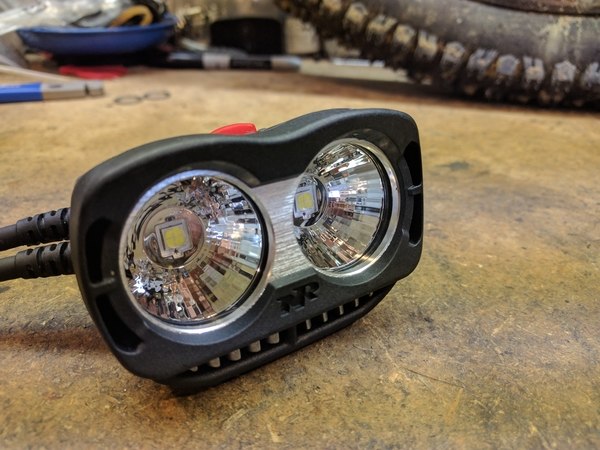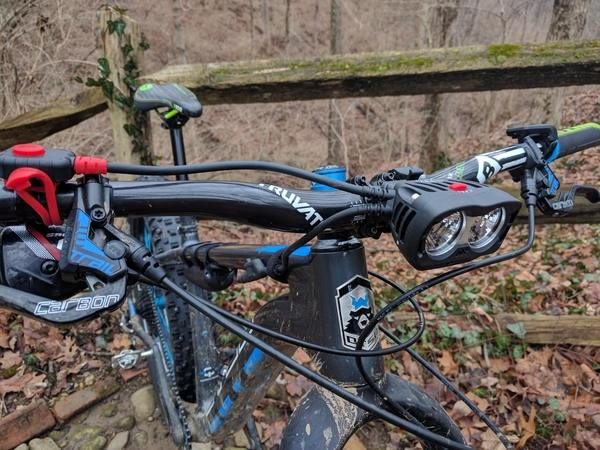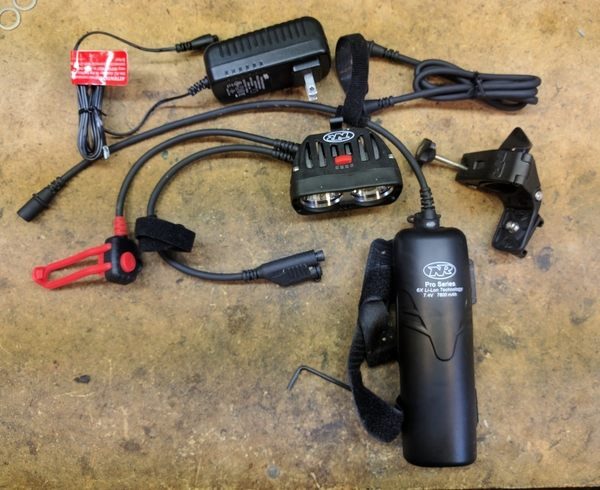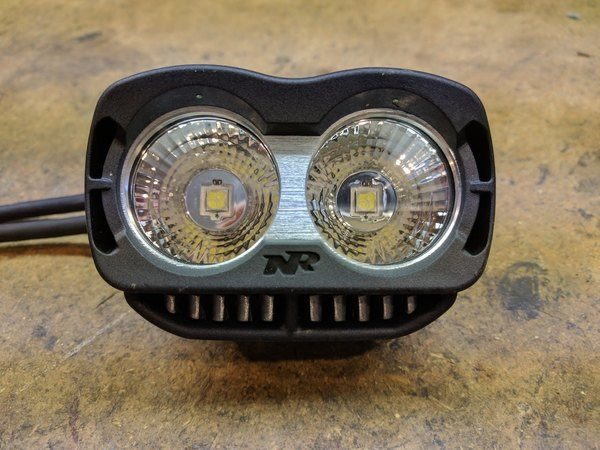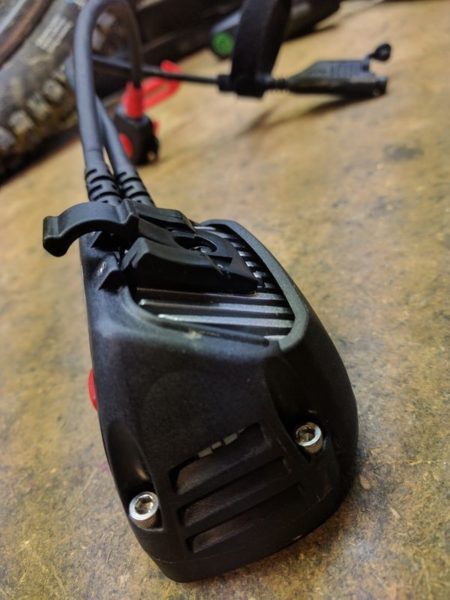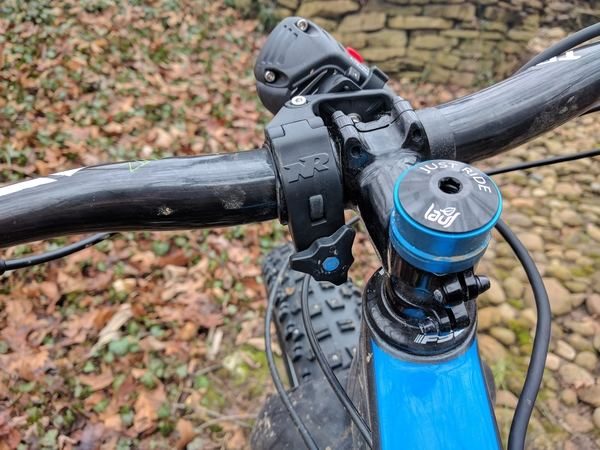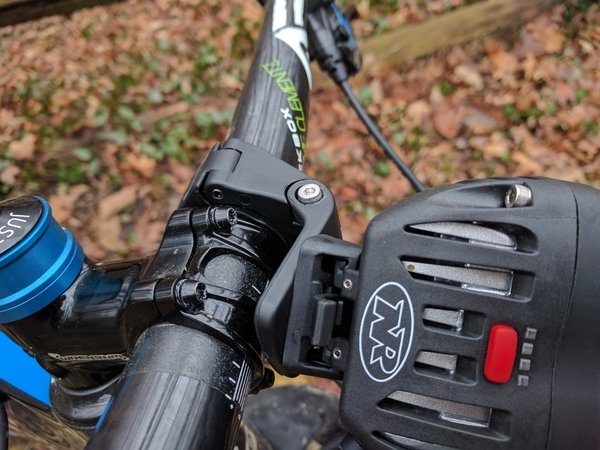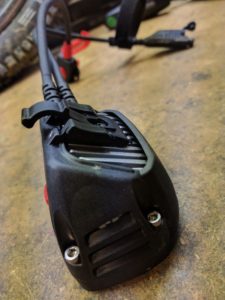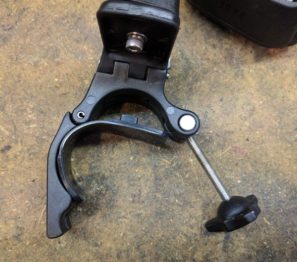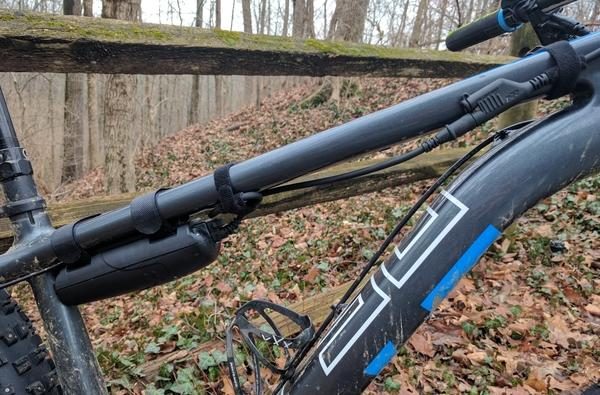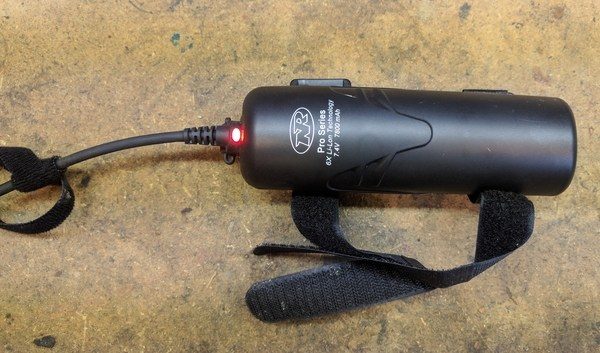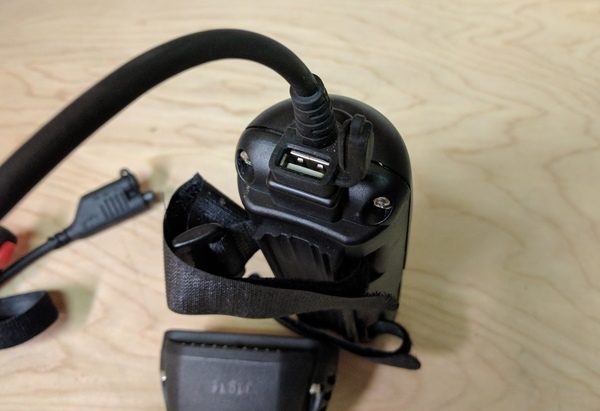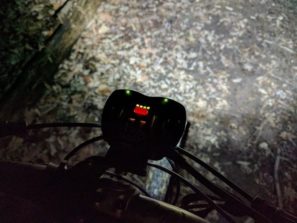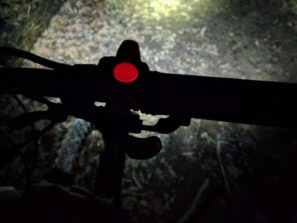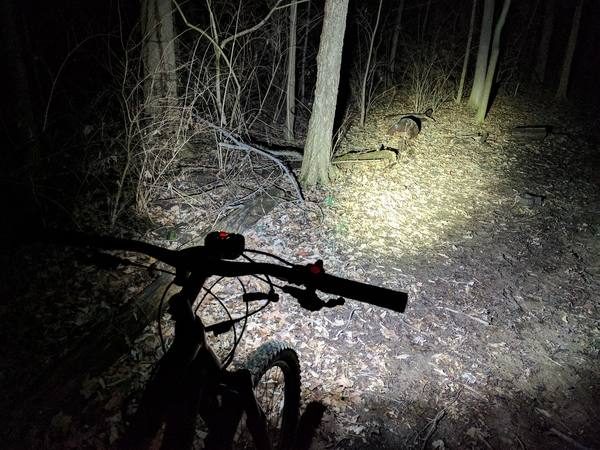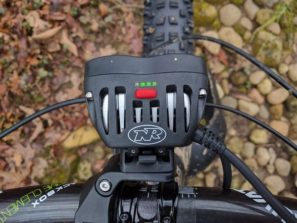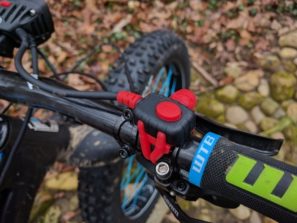I used to believe that any light putting out more than 800 lumens was just overkill. I saw more power as more weight, cumbersome designs, and unneeded output. This was prior to experiencing NiteRider’s Enduro Remote series that offered me 2800 lumens, literally at the push of a button. It wasn’t the output that swayed my mind though, it was the battery and remote. The system took a bit of getting use to, but after my second ride finding the remote’s button became second nature.
The experience of wielding such power was, dare I say… enlightening…
Out of the Box
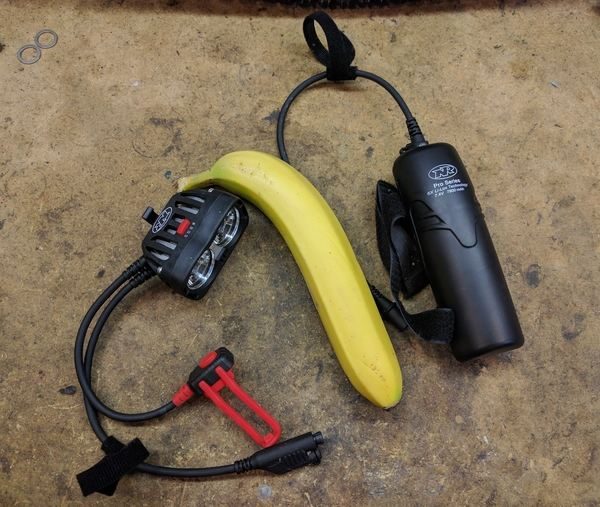
Out of the box, the system includes the lamp, battery, bar mount, 36″ extension cable, charging adapter, carrying case, manual, and stickers. At first glance, the light is covered in heat dissipation grills, and has LED indicators on top. The bottom has a curved mounting bracket that mates snugly with the bar mount. The mount gets a rubber shim that has a slightly tacky feel, and a mounting plate that extends in front of the stem. The size of the battery and lamp are reasonable, and the built-in connection cables are long enough to fit my 21.5 (XL) frame.
Mount, Adapters, and Setup
The handlebar mount is easy to adjust, and allows the light to twist, turn, or tilt as needed. It uses 2.5mm bolts to keep the adjustments from wiggling around, and a large knob to secure the mount around the bar by hand. It’ll fit most bars up to a 35mm in diameter, and if secured properly it offers a firm connection between light and bike.
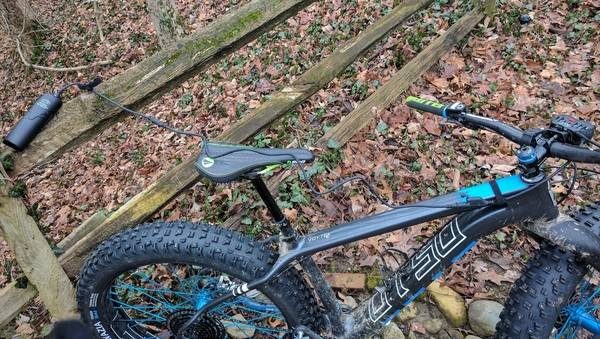
They recommend that you mount the battery under the top tube or down tube, but any open space that best suits the rider should work. I started with the pack under the top tube, but began mounting it on the down tube because the Velcro was somehow catching my tights (may have been user error the first night). The battery was secure in both recommended locations, with little to no shifting/movement throughout the rides. The 36″ extension cable offers enough length to tuck the battery into a backpack, or for you tandem riders mounts to the back half for weight distribution.
Battery
The 7.4V, 7800 mAh Li-Lon battery ranges in run time from 1:30 – 17 hours depending on the mode. One of its more unique features is a USB port for charging mobile devices. It’s a convenient use I forgot about until I needed it. Most of my night rides took place in sub/near freezing temps, this may have led to the run times experienced – 1-1:10 hours maxed out, and ~2:40 at 1400 lumens. I’m sure that with more favorable temperatures it would perform closer to the benchmarks. The charge time was pretty close to the 6 hour claim from near dead to full. Most of the time I’d top it off after a ride, not allowing it to drain more than 3/8 of the way…
Performance, Modes, and Impression
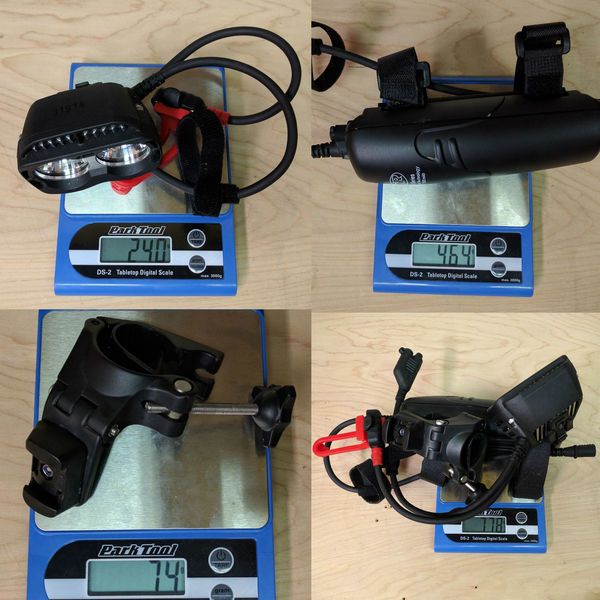
My previous thoughts about powerful lights were all thrown out the window the first night. The high output wasn’t what swayed my thoughts on the matter. It was the ease of use in addition to the long battery life in lower power modes. I did enjoy maxing out the light for entire rides, though. It painted a picture of how different night riding is for people depending on the lumen output. The normal trip however consisted of me running it at 825 or 1400 just to get a longer run time. As I mentioned before, using the remote took a ride or two to get use to, but became increasingly more useful. It’s nice being able to keep both hands on the bar while adjusting the light. The lamp has a battery indicator made up of 4 LEDs and represents the battery level in 1/8 increments. They change from solid green, to flashing green, to a single red light. It also has two bulb indicators that helps sort out which mode you’re in (Right (low), Left (Mid), Both (High) w/ variations). Additional modes include, flashing, beacon, SOS, and walking. I played around with the modes and they all worked well, but didn’t have the need to fully test them. The remote has a dim red glow which helped remind me the first couple rides that it was there. It also added a nice aesthetic, matching the glowing power button on top of the lamp. The remote option is only available on the 2800 & 3600 models.
Weight doesn’t comes to mind for me with this kind of gear, but the weight of your accessories does add up. After double confirming with different scales, it was interesting to see my unit ring in at 778g, while the claimed weight is 625g. Price: $450
